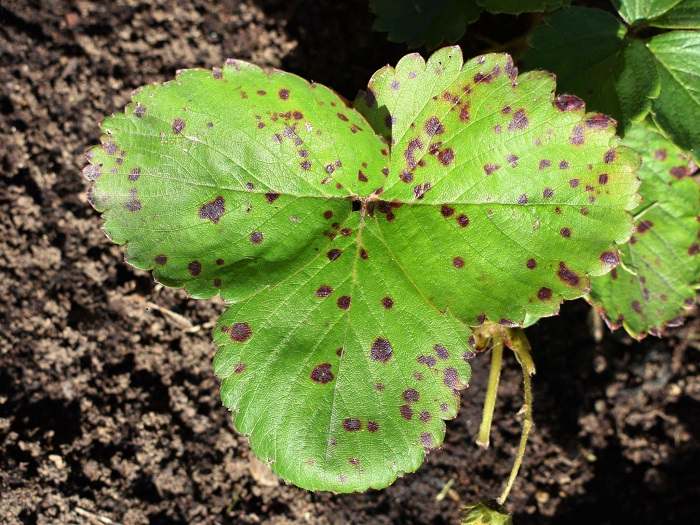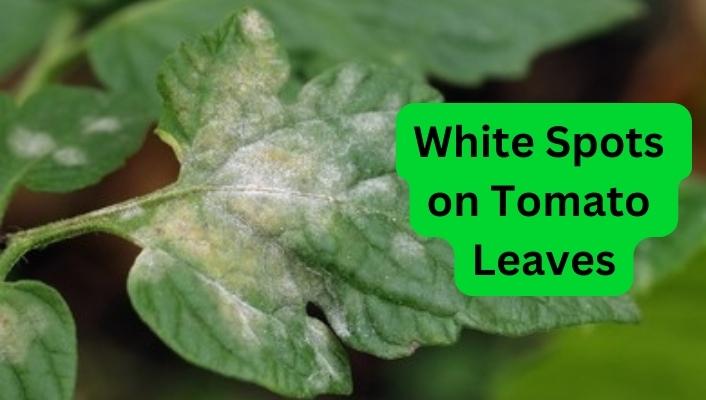Tomatoes are a popular and versatile fruit that can be grown in gardens and containers. They are known for their vibrant red color and delicious taste. However, as a tomato plant owner, you may encounter various issues that affect the health and appearance of your plants.
One common problem is the development of white spots on tomato leaves.
In this article, we will explore the causes of these white spots, how to identify them, and methods to prevent and control their occurrence.
However, if you want to know about the lifecycle of tomato plants with a care guide, you can read our article about tomato plant.
Post Contents
Understanding The Problem of White Spots:
The White spots are abnormal markings or discolorations that appear as white or pale patches on the surface of the leaves. These spots can vary in size, shape, and intensity, depending on the underlying cause. While the white spots themselves may not directly harm the tomato plants, they often indicate an underlying issue that needs to be addressed.
Causes of White Spots on Tomato Leaves:
Fungal Diseases
Fungal diseases such as powdery mildew and leaf spot are common culprits behind white spots on tomato leaves.

Powdery mildew is characterized by a powdery white growth on the leaves, while leaf spot manifests as circular or irregular-shaped white spots with dark borders.
These diseases thrive in humid conditions and can spread rapidly if not managed effectively.
Bacterial Infections
Bacterial infections like bacterial speck and bacterial spot can also lead to the appearance of white spots on tomato leaves. Bacterial speck causes tiny, dark-centered spots surrounded by a white halo, while bacterial spot results in larger, irregular-shaped white spots. These infections are typically spread through water splashing or contact with infected plant material.
Insect Infestations
Certain insects, such as whiteflies and spider mites, can cause white spots through their feeding activities. These pests puncture the leaf tissues and suck out the plant sap, resulting in localized damage and the formation of white patches. Additionally, their feeding can weaken the plants, making them more susceptible to other diseases.
Read More: Do Onions Grow Underground? (Unveiling the Mystery)
Identifying the Problem
To effectively address the issue of white spots, it is crucial to correctly identify the cause. Here are some factors to consider when identifying white spots:
Physical Characteristics
Observe the shape, size, and appearance of the white spots. Are they powdery and easily rub off? Do they have distinct borders? Understanding the physical characteristics can help narrow down the potential causes.
Associated Symptoms
Pay attention to any accompanying symptoms or changes in the plant’s overall health. Are the leaves wilting or turning yellow? Are there dark spots or lesions present? These additional symptoms can provide valuable clues in determining the underlying cause of the white spots.
Prevention and Control
Preventing white spots requires a proactive approach and good gardening practices. Here are some preventive measures and control strategies you can implement:
Proper Planting Techniques
Start with healthy tomato seedlings or disease-resistant varieties. Ensure adequate spacing between plants to promote good air circulation and reduce the risk of fungal and bacterial diseases.

Avoid overhead watering, as wet foliage can contribute to the development of white spots.
Regular Inspection and Monitoring
Regularly inspect your tomato plants for any signs of white spots or other abnormalities. Early detection allows for prompt action and minimizes the spread of diseases. Remove and destroy any infected leaves or plant debris to prevent further contamination.
Cultural Practices
Maintain proper plant nutrition by providing balanced fertilization. Avoid excessive nitrogen, as it can promote lush growth, making the plants more susceptible to diseases. Mulching around the base of the plants can help conserve soil moisture and reduce the risk of splashing water-borne diseases.
Chemical Treatments
If the issue of white patches persist or worsen, you may consider using chemical treatments. Consult with a local gardening expert or extension service to identify suitable fungicides or bactericides for your specific situation. Always follow the instructions and safety guidelines provided by the manufacturer.
Also Read: 7 Asparagus Growing Stages: (w/Care Guide)
Organic Approaches to Solve This Issue
For those preferring organic gardening practices, several options are available to manage this problem:
Neem Oil
Neem oil, derived from the neem tree, has natural fungicidal and insecticidal properties. Dilute neem oil according to the instructions and spray it on the affected tomato leaves. The oil will coat the foliage, inhibiting the growth of fungal spores and repelling certain insects.
Baking Soda Solution
A homemade baking soda solution can be an effective fungicide against powdery mildew. Mix 1 tablespoon of baking soda, 1 teaspoon of liquid soap, and 1 gallon of water. Spray the solution on the tomato leaves, covering both sides. The alkaline properties of baking soda help disrupt the growth of fungal spores.
Copper-Based Fungicides
Copper-based fungicides, such as copper sulfate or copper hydroxide, are approved for organic gardening and can help control fungal diseases. Follow the manufacturer’s instructions for proper application and use caution to prevent copper toxicity in the plants.
FAQs
Q: How do I prevent white spots on tomato leaves?
A: To prevent this problem, practice good gardening techniques such as proper spacing, avoiding overhead watering, regular inspection, and maintaining balanced nutrition. Implement preventive measures and promptly address any signs of disease or insect infestation.
Q: Can I eat tomatoes with white spots on the leaves?
A: Yes, you can still consume tomatoes with white spots on the leaves. The spots themselves are not harmful, but they may indicate an underlying issue. However, it is advisable to thoroughly wash the tomatoes before consumption.
Q: Are white spots contagious to other plants?
A: Depending on the cause, white spots can be contagious to other plants. Fungal and bacterial diseases can spread through water splashes, wind, or contact with infected plant material. It is important to isolate affected plants and practice good hygiene to prevent the spread of diseases.
Q: Can I use household remedies to treat white spots?
A: Yes, certain household remedies can be effective in treating white spots on tomato leaves. Neem oil and baking soda solutions are commonly used organic options. However, it is important to note that these remedies may not completely eliminate the underlying cause and are best used in conjunction with preventive measures.
Q: When should I seek professional help?
A: If the problem persist or spread despite preventive measures and organic treatments, it may be necessary to seek professional help. Local gardening experts or extension services can provide guidance and recommend appropriate chemical treatments for severe or persistent cases.
The Final Verdict
White spots on tomato leaves can be indicative of underlying issues that require attention. By understanding the causes, identifying the symptoms, and implementing preventive measures, you can minimize the occurrence and impact of white spots on your tomato plants.
Whether through traditional or organic approaches, proactive care and regular monitoring will help ensure healthy and thriving tomato plants.
Read More Blogs:

